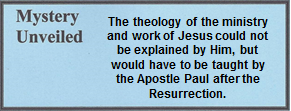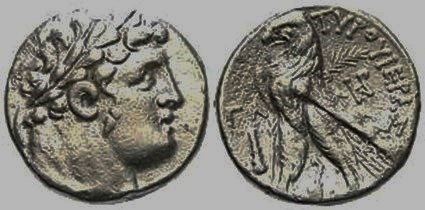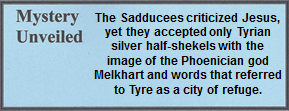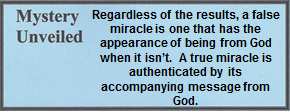11.02.08 Mt. 18:18-20
APOSTLES GIVEN AUTHORITY
18 I assure you: Whatever you bind on earth is already bound in heaven, and whatever you loose on earth is already loosed in heaven. 19 Again, I assure you: If two of you on earth agree about any matter that you pray for, it will be done for you by My Father in heaven. 20 For where two or three are gathered together in My name, I am there among them.”
“Bound in heaven . . . loosed in heaven.” There are two interpretations of this subject of loosening and binding and what Jesus intended for His disciples and His church. [1]
- Binding and loosening as understood in punishing or absolving men in the synagogue relative to religious law[2]
- Binding and loosening is understood in a spiritual context, that is, to bind and loose the spirits that motivate, manipulate, or control people.[3] But what it does not mean is that either the disciples or the church have the authority to forgive sins or to send anyone to heaven or hell – that is reserved for God alone.
The interpretations of the phrase vary among biblical references as well as among church denominations today and certainly will not be resolved here.[4] However, understanding this phrase has a direct implication of how the disciples would deal with those who were possessed or controlled by demonic forces. It has been said that Jesus clearly gave limited authority to His disciples to control the spiritual dynamics in their environment.
One interpretation is that this Hebraic idiom was used to express the rabbinical authority to either forbid or permit various activities in the synagogue. The rabbis functioned as if they were entrusted with a limited degree of divine authority concerning the affairs of the people under their ministry. This concept was continued in the early church and demonstrated in Acts 15:1-11 where Peter gave a stinging rebuke to Ananias and Sapphira for their deceitfulness. Paul functioned with this authority in I Corinthians 5:3 when he stated, “And I have already passed judgment on the one who did this.” Finally, when the Jerusalem Counsel met to consider issues related to Gentile believers (Acts 15:1-29), they invoked this rabbinic tradition that was endorsed and extended by Jesus when they decided that their decision was based on what, “seemed good to the Holy Spirit and to us …”
Finally, during the Inter-Testamental Period, some Jews believed that the phrase “binding and loosening” has spiritual implications concerning the control of Satan and his demons. In one of the most significant Inter-Testamental books is a reference to a “New Priest” or the “Righteous One,”
note the following from the Testaments of the Twelve Patriarchs.
And he shall open the gates of paradise,
And he shall overcome the threatening sword against Adam.
And he shall give to the saints to eat from the tree of life,
And the Holy Spirit shall be on him
And Beliar shall be bound by him
And he shall give power to his children to tread upon the evil spirits.
Testament of Levi 18:10-12[5]
Writing in the second century B.C., the author of the Testament of Levi made obvious references to Genesis 2:9 and what would later become Revelation 22:2, 4, and 19. And from another book within the Testaments of the Twelve Patriarchs is the following quotation:
Then Shem shall be glorified; because God the Lord, the Great One in Israel, will be manifest upon the earth [as a man].[6] By himself will he save Adam. Then all the spirits of error shall be given over to being trampled underfoot. And men will have mastery over the evil spirits.
Testament of Simeon 6:5-6[7]
The final example from a third book of the Testaments of the Twelve Patriarchs is the following quotation which has a reflection upon Malachi 4:2.
And thereafter the Lord himself will arise upon you, the light of righteousness with healing and compassion in his wings. He will liberate every captive from the sons of men from Beliar, and every spirit of error will be trampled down. He will turn all nations to being zealous of him. And you shall see [God in a human form],[8] he whom the Lord will choose: Jerusalem is his name.
Testament of Zebulon 9:8[9]
Some rabbis, as early as the second century B.C., had various opinions of what the messiah would be like. The exorcisms performed by Jesus did not surprise them. However, Jesus went a step further – He authorized His disciples to perform the same acts of healing and setting people free from demonic oppression as He did.
The subject of binding and loosening was not restricted to Jewish and early Christian communities. Such curses, blessings, and charms have been found by archaeologists in the ruins of many pagan communities. An interesting one was written on an ostracon from the Egyptian city of Ashmunen in the second century A.D. Notice that the individual who places a “binding” restriction does so by the power of God and pagan deities.
Cronos, thou who restrainest the wrath of all men, restrain the wrath of Hor, whom Mary bore, and suffer him not to speak with Hatros(?), whom Taisis bore. I adjure … by the finger of God[10] that he open not his mouth to him, because he is subject to Crinupelis(?) and Cronos. Suffer him not to speak with him, neither for a night nor a day, nor for one hour.
An Egyptian Charm for Binding[11]
This Egyptian ostraca is one of many that clearly suggest that the term binding and loosening was used in a spiritual sense.[12] Since this artifact was first published in 1927, many others have been found that reveal spiritual warfare. Therefore, on that evidence alone it is highly unlikely that Jesus meant it only in a legalistic or legislative sense. Two examples are:
- In the gospels, those who could not speak were said to have been “bound” by a non-human force. Zechariah, when in doubt, had his tongue bound by an angel. It was not a physical illness that caused the loss of speech, but a spiritual binding.
- Another example is found in Luke 13:16 where Jesus said that Satan had “bound” a daughter for eighteen years. He meant that the crooked woman who was “bound” by a “spirit of infirmity” was later “loosened” on the Sabbath.
Therefore, Jesus clearly meant that the phrase “bound in heaven . . . loosed in heaven” refers to limited binding and loosening of demonic spirits by people with the use of His power.[13]
“If two of you on earth agree.” What Jesus repeated to His disciples was not a new revelation but a fulfillment of what they had learned in their youth. This discussion had a major emphasis on how someone was to be removed from the fellowship of the early Church. Clearly, if the Church followed divine principles, God would honor their final decision. It reads as follows:
Rabbi Halafta ben Dosa of Kefar Hanania said: “If ten men sit together and occupy themselves with the Law, the Divine Presence rests among them, for it is written, ‘God standeth in the congregation of God’ (Ps. 82:1). And whence do we learn this even of five? Because it is written, ‘And hath founded his group upon the earth’ (Am. 9:6). And whence even of three? Because it is written, ‘He judgeth among the judges’ (Ps. 82:1). And whence even of two? Because it is written, ‘Then they that feared the Lord spoke one with another: and the Lord hearkened and heard’ (Mal. 3:16). And whence even of one? Because it is written, ‘In every place where I record my name I will come unto thee and I will bless thee’” (Ex. 20:24).
Mishnah, Aboth 3.6
This passage suggests that ten men were needed to establish a new synagogue. Why were ten men required? It has been suggested that if ten men tithed, they could afford to employ a scribe who would teach the Torah. However, the rabbinic rules that only men could form a synagogue apparently is in Jewish writings after the 500s. Prior to that time, in some areas both men and women could establish a synagogue.[14] Women were included in the quorum that made up ten persons in the Galilee area,[15] but this was not the case in Jerusalem. Nonetheless, since most scribes were men who belonged to the Pharisees, they were the ones who had the greatest influence in the local synagogues.[16]
[1]. For further study on binding and loosening see 08.04.07.Q1 “What verbal formulas did exorcists use when casting out demons?” the account of the demoniac whom Jesus cleansed in 08.06.03; the phrase “Bound in heaven . . . loosed in heaven,” in 11.02.08; the phrase “Bind on earth … loose on earth” in 10.01.29; and the phrase “Lord, even the demons submit to us in Your name,” in 12.01.03. An excellent resource for further study was written by Foster and King, Binding and Loosening: Exercising Authority over Dark Powers. See also Lightfoot, A Commentary on the New Testament from the Talmud and Hebraica. 1:254-55, and Jeremias, Jerusalem in the Time of Jesus. 236.
[2]. For students who examine the policies of the two leading rabbis and their schools in Jerusalem at this time, Rabbi Hillel would have been the looser and Rabbi Shammai, the binder. See Geikie, The Life and Words of Christ. 1:226-27.
[3]. See “to loose” and “to bind” in 10.01.29 for additional information.
[4]. A wide range of meanings to the term “binding and loosing” are found in Judg. 16:6, 13; Job 38:31; Isa. 22:21, 66:1; Ezek. 20:37; Tobit 3:13, 7:11; 1 Enoch 6:4; Mt. 22:23, 23:4; Lk. 8:29; Acts 20:22; 22:4 Rom. 7:1; and 1 Cor. 7:39.
[5]. Charlesworth, The Old Testament Pseudepigrapha. 1:795. Hiers, “’Binding’ and ‘Loosing’: The Matthean Authorizations.” 236-37.
[6]. Bracketed insert by Charlesworth.
[7]. Charlesworth, The Old Testament Pseudepigrapha. 1:787.
[8]. Bracketed insert by Charlesworth.
[9]. Charlesworth, The Old Testament Pseudepigrapha. 1:807.
[10]. The “finger of God” expression suggests a Jewish writer or a pagan author who calls upon the God of the Jews to work in this situation.
[11]. Deissmann, Light from the Ancient East. 306. The (?) suggests that the translators are not certain of the word.
[12]. For other examples, see Deissmann, Light from the Ancient East. 135-40; 301-09.
[13]. While this subject is clearly of a theological nature, Adolf Deissmann has clearly presented this position of spiritual dynamics to the phrase ‘Bound in heaven . . . loosed in heaven” in Light from the Ancient East, 302-11, esp. 307.
[14]. Cited by Fischer, The Gospels in Their Jewish Context. (Lecture on CD/MP3). Week 7, Session 1. Furthermore, the September – October, 2000 issue of Biblical Archaeology Review reports that no archaeological evidence has been found in numerous synagogue ruins to suggest a separate section for women, as has been a common opinion.
[15]. This is a minority view among scholars, but it is well known that Galilee promoted education for girls and the rabbis were not as restrictive there as those in Jerusalem.
[16]. Bookman, When God Wore Sandals. CD Trac 6 & 7.
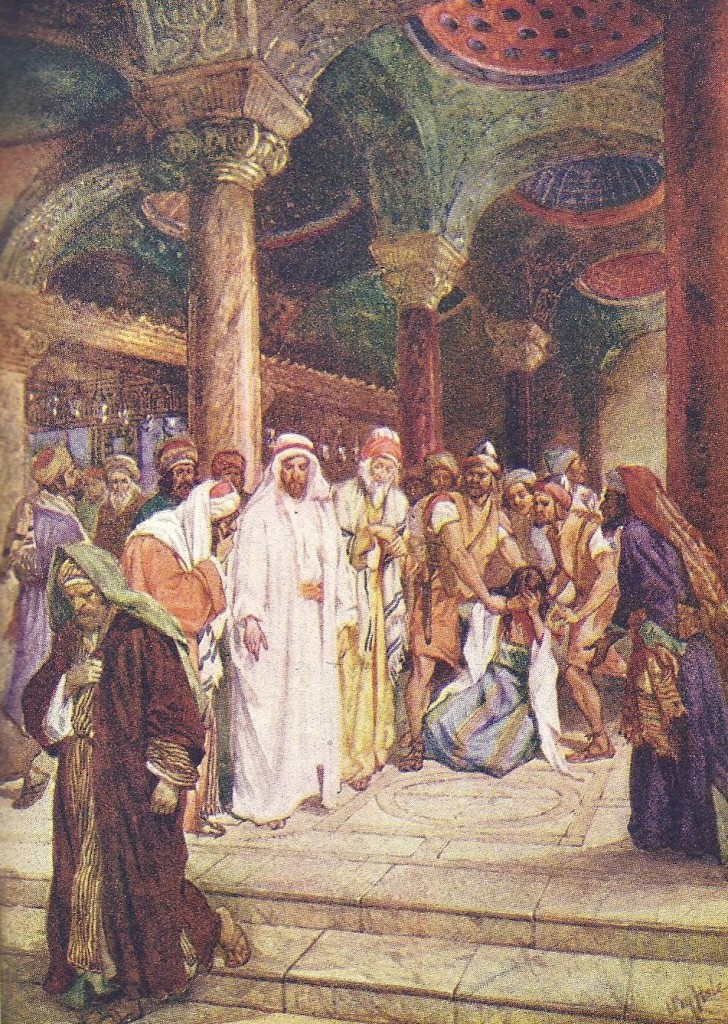
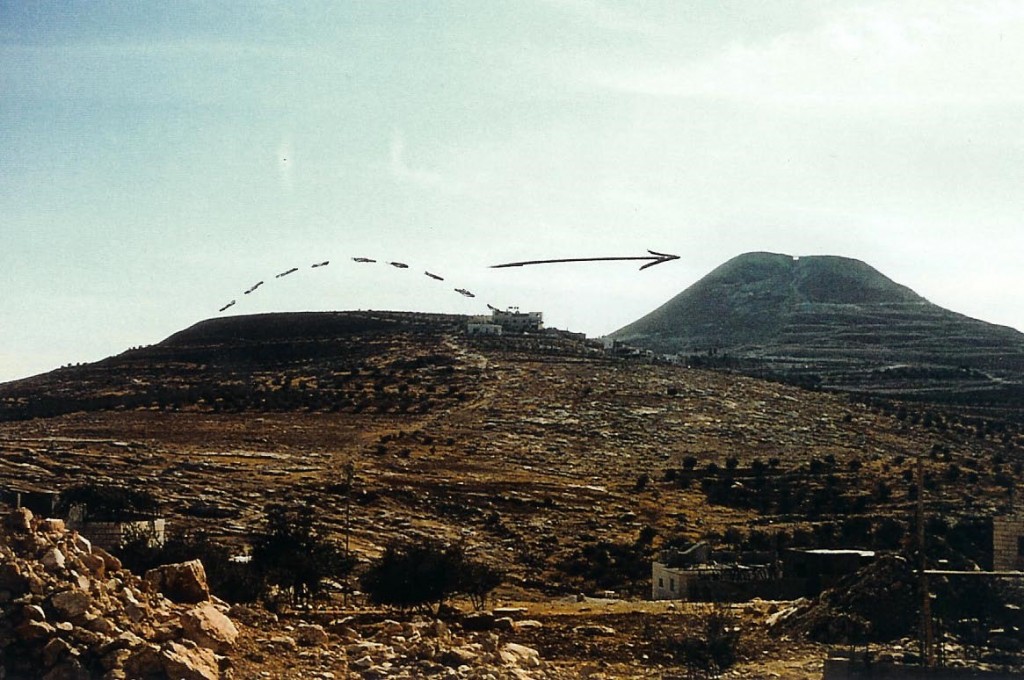 11.02.01.A. THE MOUNTAIN MOVED BY HEROD THE GREAT. The volcano-shaped Herodian Fortress-palace was created when Herod relocated one mountaintop and placed it upon another, and then built his palace-fortress upon it. Located only about two miles south of Bethlehem, this architectural achievement was built with slave laborers and was the backdrop to the words of faith spoken by Jesus. Photograph by the author.
11.02.01.A. THE MOUNTAIN MOVED BY HEROD THE GREAT. The volcano-shaped Herodian Fortress-palace was created when Herod relocated one mountaintop and placed it upon another, and then built his palace-fortress upon it. Located only about two miles south of Bethlehem, this architectural achievement was built with slave laborers and was the backdrop to the words of faith spoken by Jesus. Photograph by the author.